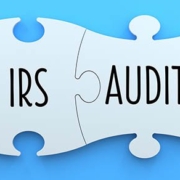CAN YOU WRITE OFF A BAD DEBT?
Most small businesses have receivables that cannot be collected. These receivables can be from the sale of products, providing services to customers, or a combination of the two.
Whether a bad debt deduction will apply generally depends upon which accounting method is used (either the cash or accrual method). Why does this make a difference? Let’s look at what happens under both methods of accounting.
- Accrual – If the accrual method is used, all of your billings must be treated as income, whether or not they have been collected. This means that the taxable income already includes the income from your deadbeat customers. Therefore, these items are considered a bad debt when those receivables become uncollectible and can be deducted. If the accrual method of accounting is used, bad debts are deductible.
- Cash – On the other hand, if the cash method of accounting is used, income is not reported until it is received (unlike the accrual method). Because the income was never reported in the first place, a deduction cannot be taken if you were never paid for the goods or services you provided. This is a hard concept to understand, so let’s consider the following example. Jack has a cash basis business with two customers. He invoices both customers for $5,000. One pays Jack promptly, while the other skips out on him without making payment. Jack actually has income of $5,000. If he were allowed to deduct the uncollected $5,000, he would end up with $0 income, which is not the case. Generally, cash basis businesses do not have bad debt deductions, although there are some exceptions (discussed below).
A taxpayer’s loan to a customer or supplier may be a business debt if there is some element of necessity for the loan, which is proximately related to the taxpayer’s business. An example is a builder who makes advances to a building material supplier and never receives the supplies. In such cases, assuming the taxpayer can prove the debt is worthless, the loan will result in a bad debt for either an accrual or cash basis taxpayer.
Proof of Worthlessness – Proving a debt (or receivable) is worthless requires the taxpayer or business to show that the debt has become worthless and that reasonable steps were taken to collect the debt.
Non-Business Bad Debts – Some bad debts may actually be personal debts, such as personal loans to individuals. In those cases, the bad debt is not deducted as a business expense but is instead treated as a short-term capital loss [on Schedule D. The bottom loss for any year on Schedule D is limited to $3,000 ($1,500 for married filing separate taxpayers). Unless the Schedule D contains gains to offset additional losses, a non-business bad debt could be limited to $3,000 per year. The good news is that any amount not deductible in a particular year carries over to the next subsequent year.
If you have questions related to a bad debt and your taxes, please give this office a call.







Leave a Reply
Want to join the discussion?Feel free to contribute!